Roy Christopher's Blog, page 8
September 20, 2023
Events and Arrivals
Join Deborah D.E.E.P. Mouton and me for Intellect U Well Journeys: Afrofuturism book discussion at the African American History Research Center in Houston, Texas on October 7th! Get your tickets!

Deborah D.E.E.P. Mouton is an internationally-known writer, librettist, educator, activist, performer, and Poet Laureate Emeritus of Houston, Texas.
Formerly ranked the #2 Best Female Performance Poet in the World, Her recent poetry collection, Newsworthy (Bloomsday Literary, 2019), garnered her a Pushcart nomination and was named a finalist for the 2019 Writer’s League of Texas Book Award and an honorable mention for the Summerlee Book Prize. Her memoir, Black Chameleon (Henry Holt & Co, 2023), explores the use of modern mythology as a path to social commentary.
I’ll be talking about how the edited collection, Boogie Down Predictions came together, and, inevitably, about writing its companion volume, Dead Precedents.
Coming Ashore: My sister Cynthia already copped her copy!Different Waves, Different Depths
My sister Cynthia already copped her copy!Different Waves, Different DepthsMy first collection of short stories came out last week on Impeller Press, and it’s starting to wash up in the mailboxes of the fortunate!
Different Waves, Different Depths is a collection of nine stories, varying in style from the literarily weird (“Subletter,” “Hayseed, Inc.”) to the science fiction (“Drawn & Courted,” “Not a Day Goes By”) and in length from the flash (“Kiss Destroyer,” “Antecedent”) to the novella (“Fender the Fall”). There’s even a pilot script in here (“Post-Intelligence”). There are time loops and time travel, reality television and big data, consultants who can make anyone a winner, a newspaper that’s just gone online-only, a band that never existed but is all too real, mistaken identities, roadtrips, drugs, guns, murder, and a love story or three.
Here’s a brief excerpt, in case you missed it:
Get yours now! You’ll like it.
Speaking of…
Different Waves, Different Depths joins several other titles in a spree of recent output by me and my friends.
As always, thank you for reading,
-royc.
September 12, 2023
Kiss Destroyer
My first collection of fiction is out today on Impeller Books!
Different Waves, Different Depths is a collection of nine stories, varying in style from the literarily weird (“Subletter,” “Hayseed, Inc.”) to the science fiction (“Drawn & Courted,” “Not a Day Goes By”) and in length from the flash (“Kiss Destroyer,” “Antecedent”) to the novella (“Fender the Fall”). There’s even a pilot script in here (“Post-Intelligence”).
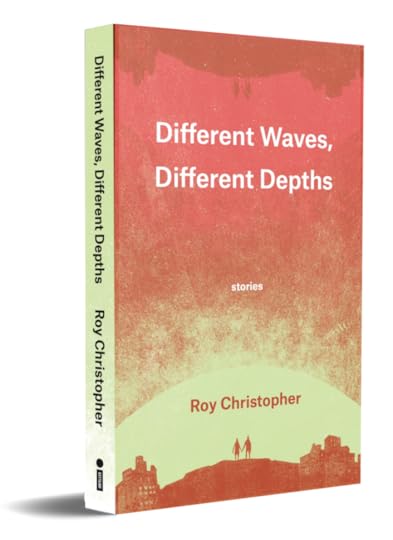 Cover art by Jeffrey Alan Love. Book design by Patrick Barber.
Cover art by Jeffrey Alan Love. Book design by Patrick Barber.There are time loops and time travel, reality television and big data, consultants who can make anyone a winner, a newspaper that’s just gone online-only, a band that never existed but is all too real, mistaken identities, roadtrips, drugs, guns, murder, and a love story or three.
Dive in deep, ease in the shallows, or just let the tide lap at your toes. Different waves are waiting.
Here’s an excerpt:
 “I never wanted to destroy this one.”Kiss Destroyer
“I never wanted to destroy this one.”Kiss DestroyerWe met halfway. For the first time since meeting her, I knew definitively that she was with someone. She was engaged. The wedding was a few months off. We talked and we drank and we danced and it felt like it always felt. I was overwhelmed. The only thing that kept me grounded was knowing that in a few months, she’d be married to someone else. And I’d be gone.
I leaned in close to her ear and whispered, “this is nice.”
She stopped, stunned. She flashed a withering look and edged away from me through the crowd.
“Wait!” Hearing me behind her, she hurried on. I caught her in the bar. “I meant that it felt nice knowing—”
“No, I feel the opposite,” she turned and said. “It doesn’t feel nice knowing. It feels awful!”
“Well, I was speaking for you. I thought—” She put her finger on my lips to shush me. She was definitely angry but seemed ready to recover.
“Want some?” she asked, pulling a flask from her purse.
“What is it?”
“Have some or don’t,” she said over her shoulder, walking out onto the balcony.
“I didn’t think—” I said as she drank.
“You always knew.” She handed me the flask. I downed a gulp of sweet liquid. It tasted the way antifreeze smells, perhaps a flavored vodka of some kind. “I always hoped, but I never knew.”
“Is that why you’re here now, hope?”
“Yes.”
“Well, all of your hopes are here, and they’re all shit. Sorry.”
As I took another swig, everything took on a fog, soft around the edges. I felt anger and disappointment sharpening in me. “Then why are we here? What is this?”
“Let’s dance!” She said, draining the flask.
“I don’t want to—” She grabbed my arm and dragged me inside. She kissed me deep, hard, obviously feeling the drink, and then pulled me onto the dance floor.

The music and the bodies blurred. We were together, then apart, then together. One minute, we were blended into one, the next, we were on different planets. Other bodies remained distinct, but ours melded and folded and separated like taffy. The music was one, long song, and it was always exactly the right one.
The melding continued when we finally made it upstairs to bed. I’m not even sure we had sex, but we were one many times over before we slept. We fell in and out of love over and over, fighting, folding, fucking. I wish I could remember it more clearly.
“Every time you make a decision, it’s like destroying a whole other world,” she told me earlier that evening. “I never wanted to destroy this one.”
Advance Praise:“Working the borderlands between philosophy, sci-fi, and ultra-contemporary social critique, these stories illuminate our strange cusp moment in a deeply humanistic and bracing manner. A sharp, propulsive, and canny collection.” — David Leo Rice, author, Drifter
“In Roy Christopher’s inquiring, voracious tales, memory is a form of energy, and worlds emerge out of slippages, of which—ouch, there’s another—there are many more than we like to admit.” — Matthew Battles, author, The Sovereignties of Invention
“The stories in Different Waves, Different Depths showcase an impressive range of voice and style. They challenge without being difficult; evoke nostalgia without feeling rote. A fantastic collection.” — Joshua Chaplinsky, author, The Paradox Twins
“Hard-boiled strange loops in a froth of weird.” — Will Wiles, author, Plume
Other Excerpts:“Antecedent” on Close to the Bone
Table of Contents:Drawn & Courted
Kiss Destroyer
Antecedent
Not a Day Goes By
Dutch
Subletter
Hayseed, Inc.
Post-Intelligence
Fender the Fall
Many thanks to Patrick Barber for all of his amazing work on putting this thing together, making it look so nice, and getting it out there. Thanks to Jeffrey Alan Love for the cover illustration, to The Little One for the title, to all the previous publishers of these stories for their support, and to you for reading.
Different Waves, Different Depths is dedicated to the memory of Kelly Lum.
Publication day!
Thank you for reading, responding, and sharing,
-royc.
September 7, 2023
One Year of BOOGIE DOWN PREDICTIONS
It’s been a year since Boogie Down Predictions dropped!
 Cover art by Savage Pencil.
Cover art by Savage Pencil.While I was writing my book Dead Precedents: How Hip-Hop Defines the Future (Repeater Books, 2019), I gathered up some friends, and we put together an edited collection as sort of a companion to Dead Precedents. Time was one of the aspects of both hip-hop and science fiction that I didn’t get to talk about much in that book, so I started asking around. I found many other writers, scholars, theorists, DJs, and emcees, as interested in the intersection of hip-hop and time as I was. I had three solid pieces at the end of the first day! As I continued contacting people and collecting essays, I got more and more excited about the book. Boogie Down Predictions: Hip-Hop, Time, and Afrofuturism is a quest to understand the connections between time, representation, and identity within hip-hop culture, as well as what that means for the culture at large.
 Crazy respect to Jeff Chang for the kind words.
Crazy respect to Jeff Chang for the kind words.Here’s my Preface to Boogie Down Predictions:
Preface:
“It’s harder to imagine the past that went away than it is to imagine the future.”
— William Gibson
“What can you do? You can’t turn back the clock.That’s why you keep on moving, and you don’t stop.”— Babbletron, “The Clock Song”
“The past is a foreign country; they do things differently there.” So begins the prologue to L. P. Hartley’s 1953 novel The Go-Between. Time is as inescapable as it is impossible to conceive. Technology tries to tame it, chopping it into discrete bits and arranging them in manageable lines: the alphabet, the printing press, the clock, the internet. Marshal McLuhan once wrote, “Just as work began with the division of labor, duration begins with the division of time, and especially with those subdivisions by which mechanical clocks impose uniform succession on the time sense.” From Frederick Taylor’s studies of time and scientific management to the division of labor of Taylor and Henry Ford, the inventors of modern industrialization, division and duration are operative terms for the technologies of time.
If you were asked to name the salient elements that define hip-hop music, sampling would be among the first things to come to mind. If you’re reading this, you know it started manually with fingers finessing black vinyl, chopping and stretching tones on two turntables. The manual mixing of recorded sounds by DJs allows them to, as Naut Humon puts it, “Manipulate time with your hands!” Reconfigured and recontextualized notes lift hip-hop out of the linear, tying it equally to both forgotten pasts and lost futures. Because of sampling, hip-hop’s manipulation of sound is also its manipulation of time. More so than any other musical genre, hip- hop toys with temporality.
 Dart Adams knows the time.
Dart Adams knows the time.Further stretching this frame, the aesthetic of hip-hop’s early days feels like possible futures. Way before Tupac and Dr. Dre danced in the desert and Chuck D was doorman to the Terrordome, things were always already going down in the Boogie Down Bronx. The post-apocalyptic scene there in the early 1970s, the repurposing of left-behind technology, the hand-styled hieroglyphics on every building wall, and the gyrating dance moves: an entire culture assembled from the freshest of what was available at hand.
Whereas the dominant (read: “European, white, male”) culture of the 20th century regularly pictured the next century through stories and inventions, that hasn’t been the case as much among those same folks so far in the 21st. Even as far back as Edward Bellamy’s Looking Backward, which viewed its 1887 present from a fictional year-2000 wherein the United States had evolved into a technologically enabled, Marxist utopia. Twenty-first century tales that venture to look that far ahead rarely find such positive results, especially where technology is concerned.
With that said, it would be remiss to talk about hip-hop and its tumultuous relationship with time without mentioning Afrofuturism. “Afrofuturism is me, us [...] is black people seeing ourselves in the future,” says Janelle Monáe, whose futuristic R&B concept records The ArchAndroid, The Electric Lady, and Dirty Computer imagine android allegories in alternative futures. Afrofuturism addresses the neglect of the Black Diaspora not only historically but also in science-fiction visions of the future.
 #1 New Release, y’all!
#1 New Release, y’all!Through its relationship with time and its technological manipulation thereof, hip- hop also invites us to view different vantages of the future. Just as it recycles and revises the past, hip-hop also invites us to re-imagine the future. As we will see, these re-imaginings are far from apolitical. William Gibson is fond of saying that the future is already here, it’s just not evenly distributed yet. Any reader of history knows that he past isn’t evenly distributed either. Drawing different conclusions from the past and picturing a future that is different from the present are the very essence of resistance.
“Hip-hop is imprisoned within digital tools like the rest of us,” writes the technologist and musician Jaron Lanier. “But at least it bangs fiercely against the walls of its confinement,” That banging is the rhythm. That banging is the beat. That banging is the celebration of days past and the longing for better ones to come. As Kodwo Eshun writes in his 2003 essay, “Further Considerations on Afrofuturism,” reprinted herein,
Afrofuturism approaches contemporary music as an intertext of recurring literary quotations that may be cited and used as statements capable of imaginatively reordering chronology and fantasizing history. Social reality and science fiction create feedback between each other within the same phrase.
Though this dialog between social reality and its fictional futures has occurred since we started telling stories, mechanical and digital reproduction has made the exchange easier and much wider spread. The division of sampling and duration of remixing keeps the feedback flowing in time. As Jacques Attali puts it, “Our music foretells our future. Let us lend it an ear.”
Charles Mudede’s Book NookOur old friend Charles Mudede Recommended Boogie Down Predictions as a Christmas gift, pointing out a few of the features of the text as well as a special appearance by a cat.
 Me and Ytasha Womack talking hip-hop and Afrofuturism at Volumes Books in Chicago. [Photo by Shannon Keane.]
Me and Ytasha Womack talking hip-hop and Afrofuturism at Volumes Books in Chicago. [Photo by Shannon Keane.]Ytasha Womack, who wrote the Introduction, and I did an event for Boogie Down Predictions this July at Volumes Books in Chicago, and you missed a treat if you weren’t there.
Thank you!Many thanks to Jamie Sutcliffe and Mark Pilkington at Strange Attractor Press for their support and enthusiasm, Dominic Rafferty for the stellar layouts, and Savage Pencil for the dopest cover. Thanks to those who contributed words, images, and direction, those who wished us well, and those who didn't.
And thank you for checking it out!
 BDP at Rough Trade in the UK.
BDP at Rough Trade in the UK.If you don’t have a copy, do yourself a favor!
 BDP in Houston in October
BDP in Houston in OctoberOn Sunday afternoon, October 8th at 3 pm at Houston Public Library's African American History Research Center at the Gregory Campus, the poet, artist, activist, and teacher Deborah D.E.E.P. Mouton and I will be discussing hip-hop culture, myth-making, and Afrofuturism. Mouton’s memoir, Black Chameleon: Memory, Womanhood, and Myth, (Henry Holt, 2023), explores the use of modern mythology as a path to social commentary.
Join us!
Thank you for reading,
-royc.
September 1, 2023
Official Report on the Intransitionalist Chronotopologies of Kenji Siratori
The Official Report on the Intransitionalist Chronotopologies of Kenji Siratori is a 163 page paperback book, with an accompanying soundtrack, available today on Bandcamp for Bandcamp Friday! It’s a conceptual collaboration between cult Japanese author, Kenji Siratori, the Canadian electro-acoustic duo Wormwood, and a host of well known academics, writers, and other members of the Ministry of Transrational Research into Anastrophic Manifolds, including me!
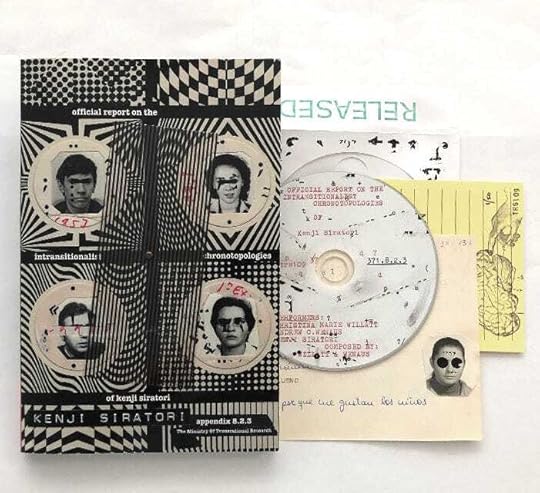
The Official Report on the Intransitionalist Chronotopologies of Kenji Siratori: Appendix 8.2.3 is an AI-generated, xenopoetic “glitch novel” of sorts, with a good portion of the book also given over to a randomly written and ordered set of strange and beautiful footnotes that were submitted by the 60+ members of the Ministry. This is a futuristic work on all fronts, and in order to contrast with the digitally obtrusive writing, and to play into our belief in“technological mutualism”, our packaging design and visual aesthetic is of a more analogue and DIY, old school cut and paste nature. What we have here then is a work of art that bridges past and future, but is firmly embedded in the NOW!
Coordinator Andrew Wenaus explains:
The result is a work of xenopoetic emergence: a beautifully absurd, alien document scintillating with strange potency. Official Report on the Intransitionalist Chronotopologies of Kenji Siratori: Appendix 8.2.3 is a xenopoetic data/dada anthology that documents the activities of the artist collective The Ministry of Transrational Research into Anastrophic Manifolds. The anthology results from an experimental approach to impersonal literary composition. Similar to surrealist definitions, but on the scale of a technical document, members of the Ministry-poets, musicians, novelists, painters, curators, artists, scientists, philosophers, and physicians-were asked to offer a microfiction, poem, essay, fictional citation, or computer code, in the form of a footnote or annotation to a glitch-generated novel by iconoclastic Japanese artist Kenji Siratori; however, each participant wrote their contribution without any access to or knowledge about the nature of Siratori's source text. After collecting the contributions, the "footnotes" were each algorithmically linked to an arbitrary word from Siratori's novel. Bringing together algorithmically and Al-generated electronic literature with analogue collage and traditional modes of literary composition, the Ministry refuses to commit solely to digital, automated, or analogue art and instead seeks technological mutualism and a radically alien future for the arts.
Accompanied by a groundbreaking original score by electro-acoustic duo Wormwood, the anthology offers the radical defamiliarization and weird worlds of science fiction, but now the strangeness bites back on the level form. Readers should expect to discover strange portals from which new ways of thinking, feeling, and being emerge. A conceptual and experimental anthology, Official Report on The Intransitionalist Chronotopologies of Kenji Siratori inaugurates collective xenopoetic writing and the conceit that the future of art will consist of impersonal acts of material emergence, not personal expression. Consume with caution.
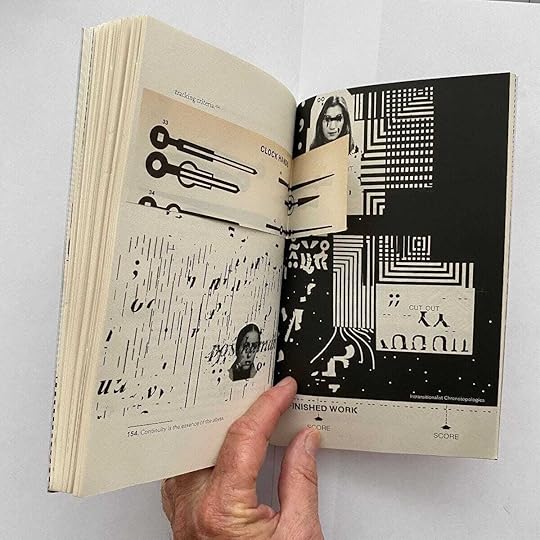
CREDITS:
Book written by Kenji Sartori.
Footnotes by the Ministry of Transrational Research into Anastrophic Manifolds: Rosaire Appel, Louis Armand, David Barrick, Gary Barwin, Steve Beard, Gregory Betts, Christian Bök, Mike Bonsall, Peter Bouscheljong, Maria Chenut, Shane Jesse Christmass, Roy Christopher, Tabasco “Ralph” Contra, Mike Corrao, R.J. Dent, Paul Di Filippo, Zak Ferguson, Colin Herrick, S.C. Hickman, Maxwell Hyett, Justin Isis, Andrew Joron, Chris Kelso, Phillip Klingler, Adam Lovasz, Daniel Lukes, Ania Malinowska, Claudia B. Manley, Ryota Matsumoto, Michael Mc Aloran, Andrew Mcluhan, Jeff Noon, Jim Osman, Suarjan Prasai, Tom Prime, David Leo Rice, Virgilio Rivas, David Roden, B.R. Yeager, Andrej Shakowski, Aaron Schneider, Gary J. Shipley, Kenji Siratori, Sean Smith, Kristine Snodgrass, Sean Sokolov, Alan Sondheim, Simon Spiegel, Henry Adam Svec, Jeff VanderMeer, R.G. Vasicek, Andrew C. Wenaus [Ministry Director], William Wenaus, Eileen Wennekers, Christina Marie Willatt, Saywrane Alfonso Williams, D. Harlan Wilson, and Andrew Wilt.
All music composed by Andrew Wenaus and Christina Marie Willatt.
Performed by Andrew Wenaus, Christina Marie Willatt, and Kenji Siratori.
Packaging design and artwork by Colin Herrick.
Produced by Andrew Wenaus and Time Released Sound.
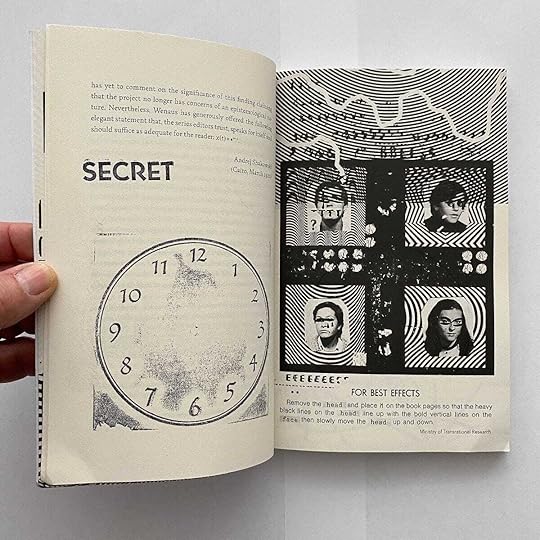
WARNING!! AS IS STATED ON THE BACK OF THE BOOK:
“Loved ones of those that disappeared reported that prior to their detainment, the victims were sent an unmarked envelope. The envelope contained a letter whose contents consisted exclusively of 317 black rectangular glyphs. Due to the still uncertain nature and status of this Appendix, Time Released Sound would like all readers to be aware of this history!”
Those of you that purchase the Limited Edition version will very possibly be sent one of these envelopes as well, sometime after you have received the book, so please be careful when ordering it!
Get yours today! It’s Bandcamp Friday, so all the money goes directly to the artists!
Thanks to Andrew Wenaus for including me in this wildly inventive project.
And thanks to you for reading,
-royc.
August 28, 2023
Like a Totem
A while back, Fevers of the Mind published two of my poems. One was “San Diego” from the inaugural issue of Sledgehammer Lit and my chapbook, Abandoned Accounts. The other was a new one called “Like a Totem” that I wanted to share with you here:
A distant point of lightFilling your hopeless quotaWith memories you had forgottenAnd habits you didn’t know you had.A search party for a souvenir;A gang from a faraway street Running you in from outside,Your wheels wound with worry.A room so quiet you could hear the walls itch;A song stuck in your head like mud;A girl staring at you with eyes so darkThey could swallow you whole.Startled by your arrival,She hides her idols in a dollhouse,A rival altar in miniatureInside a room next to the room.You knew you wouldn’t wake upBefore all your ghosts had gathered On the corner of your quiltGripped tight like a totem. Cover art by me and my Sharpie.
Cover art by me and my Sharpie.Abandoned Accounts includes a bunch of silly memories I started writing down in poem form, reflections of walks in the woods at my parents’ house in the hinterlands of southeast Alabama, encounters with favorite bands and somewhat famous people, tales of travel and intrigue, and a few stray poems from as far back as 1990.
Here’s an interview with me about the book upon its one-year anniversary with fellow poet, the brutally beautiful, HLR.
And here’s a taste: the great Scott Cumming reading “Virga” from Abandoned Accounts:
It’s a fun little book of verse. Get a pretty blue paperback for $7.99 or the Kindle version for only $3.99!
As always, thank you for reading,
-royc.
August 20, 2023
Overlooked, Underrated, or Otherwise Unsung
Last week’s Touch and Go listicle went over so well, I’m doing another one this week!
If I had to pick one thing, I’d say that my taste in movies is driven by the desire to see something I haven’t seen or can’t see otherwise. Be it ridiculous, unfathomable, violent, scary, or visual — just something I can’t see walking down the street.
Perhaps just my own personal cult classics, here are ten movies from this century so far that I don’t think are talked about nearly enough (in chronological order).
 Bruce Campbell as Elvis and Ossie Davis as JFK in Bubba Ho-Tep (2002).
Bruce Campbell as Elvis and Ossie Davis as JFK in Bubba Ho-Tep (2002).Bubba Ho-Tep (2002): I saw Bubba Ho-Tep in the theater. I’d just read Bruce Campbell’s first book, If Chins Could Talk, so I was primed. In a retirement home terrorized by an ancient Egyptian mummy, Campbell is Elvis Presley and Ossie Davis is John F. Kennedy. Writer-director Don Coscarelli manages to tackle some very serious topics from this madcap premise. I am still baffled that this movie hasn’t gotten a thorough and positive reassessment.
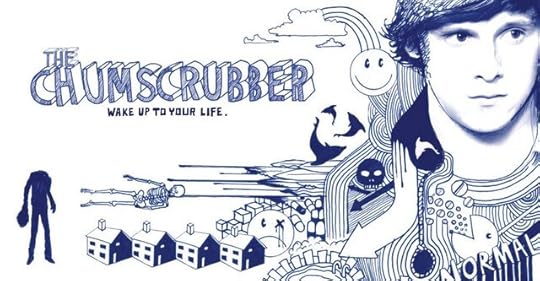 High school.
High school.The Chumscrubber (2005): During my initial Donnie Darko (2001) phase, I watched a bunch of recommended-if-you-like movies. Most of them faded away while The Chumscrubber went on to become one of my all-time favorites (The only other one I can remember from that era now is The United States of Leland). How Arie Posin was able to get this cast for his debut as a writer-director is a miracle in itself. Allison Janney, William Fichtner, Ralph Fiennes, Rory Culkin, Glenn Close, Lauren Holly, John Heard, Justin Chatwin, Lou Taylor Pucci, Carrie Anne-Moss, Rita Wilson, Camilla Belle, and Jamie Bell all turn in stellar performances. I’ve recommended this movie to so many people and have yet to find anyone else who likes it.
 This is the way the world ends… You have no idea.
This is the way the world ends… You have no idea.Southland Tales (2006): I write and talk about Richard Kelly’s second film every chance I get. Its release was delayed so much that it almost came out in the future it was predicting (2008), yet watching it in the meantime, it seems like a documentary. “Ambitious” is a euphemism people use for a failed attempt at something colossal. This movie has a three-part graphic-novel prequel (The movie itself depicts parts 4, 5, and 6). It’s a mess, but it’s a beautiful mess. Another of my all-time favorites.
 Definitely.
Definitely.Shrink (2009): Featuring Kevin Spacey, Robin Williams, Mark Webber, Jesse Plemons, Gore Vidal, Dallas Roberts, a young Keke Palmer and a pregnant Pell James, Shrink makes me remember how much I love writing and writers. The movie, while largely about grief and recovery, is also about writing and stories. The score, which is unavailable anywhere outside the film, was composed by Brian Reitzel with contributions from Ken Andrews and others, and rivals my favorites.
Coherence (2013): I talk and write about this one every chance I get as well…
See above for my interview with writer-director James Ward Byrkit.
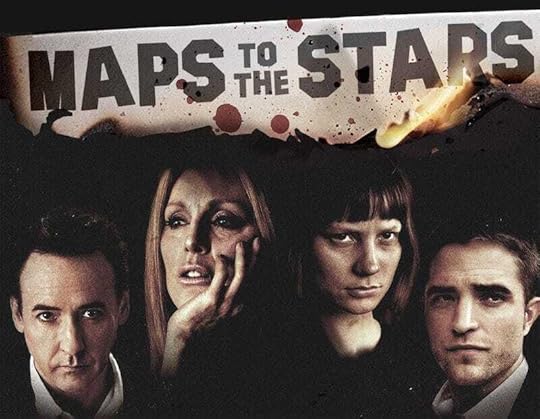 No maps for these territories.
No maps for these territories.Maps to the Stars (2014): It’s hard to beat a writing and directing team like Bruce Wagner and David Cronenberg. Wagner is a novelist who co-wrote A Nightmare on Elm Street 3: Dream Warriors (1987) with Wes Craven and wrote the miniseries Wild Palms (1993). Cronenberg is, well, Cronenberg. Mia Wasikowska, Julianne Moore, John Cusack, Robert Pattinson, Sarah Gadon, and Evan Bird all play their parts so perfectly understated. Alphabetically and conceptually between Magnolia and Mulholland Drive, Maps to the Stars explores fame, incest, and immolation in equal parts.
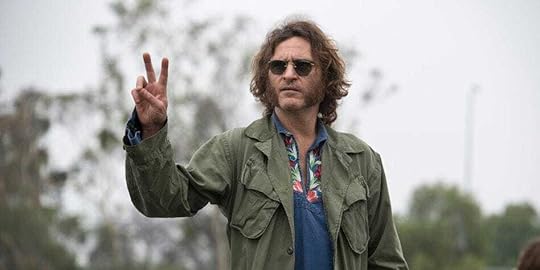 Joaquin Phoenix as Doc Sportello in Inherent Vice (2014).
Joaquin Phoenix as Doc Sportello in Inherent Vice (2014).Inherent Vice (2014): Paul Thomas Anderson took on Thomas Pynchon’s hippy noir novel, and no one seemed to notice. It’s Paul Thomas Anderson, so there are too many people to name, but Joanna Newsom’s presence and narration deserve special mention, as do the brief but memorable appearances of Hong Chau, Martin Short, Jena Malone, and a raucous performance by Josh Brolin. Sometimes I pretend it’s Lebowsky Part Two.
Now do Pynchon’s Bleeding Edge (2013).
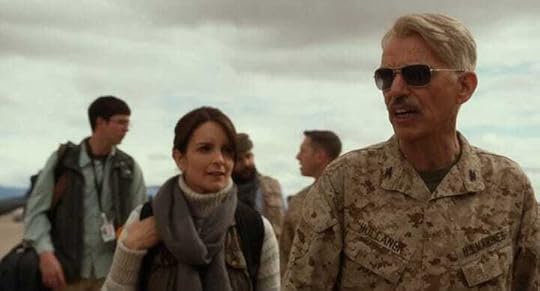 Tina Fey and Billy Bob Thornton in Whisky, Tango, Foxtrot (2016).
Tina Fey and Billy Bob Thornton in Whisky, Tango, Foxtrot (2016).Whiskey Tango Foxtrot (2016): Based on Kim Baker’s memoir, The Taliban Shuffle: Strange Days in Afghanistan and Pakistan (2011), and , Whiskey, Tango Foxtrot features Tina Fey, Christopher Abbott, Margot Robbie, Martin Freeman, Alfred Molina, and Billy Bob Thornton. This movie really captures feeling uprooted by your own choices and the simultaneous longing for a home that doesn’t necessarily exist.
 Crispin Glover can kick, and he can fight.
Crispin Glover can kick, and he can fight.Lucky Day (2019): Lucky Day is the nearly lost almost-sequel to Roger Avary’s bank-heist classic, Killing Zoe (1993). Standouts in the cast include the amazing Clifton Collins Jr. and a completely unhinged Crispin Glover. If you like Avary’s other work or you prefer your Tarantino of a certain vintage, today is your day.
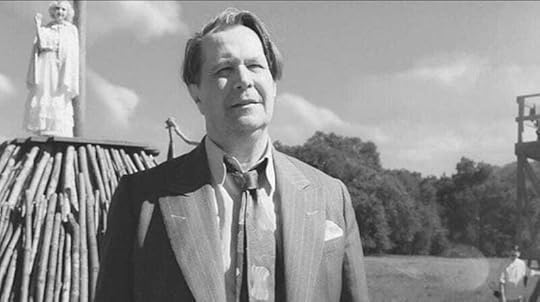 Amanda Seyfried and Gary Oldman in Mank (2020).
Amanda Seyfried and Gary Oldman in Mank (2020).Mank (2020): Another one that makes me remember how much I love writing and writers, David Fincher’s Mank was written by Jack Fincher, his father. It tells the story of Herman Mankowicz, the state of Hollywood, and the political climate during his writing of Citizen Kane. Gary Oldman plays Mank and Amanda Seyfried plays Marion Davies, a movie star and mistress of William Randloph Hearst, media mogul and subject of Mank’s screenplay. As Mank himself put it, “You cannot capture a man's entire life in two hours. All you can hope is to leave the impression of one.”
As always, thank you for reading,
-royc.
August 11, 2023
The Power of Independent Labels
There are many record labels that have been beacons throughout my lifelong music fandom, stables of carefully curated bands and sounds. Dischord, Def Jam, Sub Pop, Creation, Merge, 4AD, Def Jux, Anticon, Southern Lord, The Flenser, and Backwoodz Studioz all come to mind. Few have had the impact or staying power of Touch and Go Records though.
They do a thing over on their Instagram where they ask people what they think the most influential records from the label are. I sent one to them a few months ago, but I’m nobody, so it never rated a post (The posts are from band members of Touch and Go bands). I still wanted to share though, so…
Here are the Touch and Go releases that were most influential to me:
[Note: All record links go to the records’ Bandcamp page where you can sample and purchase the music.]

Big Black Songs About Fucking (1987): If I had to pick one, this would be it. Steve Albini’s unique sound and style, as well as his punk-literary lyricism are all here. This record’s median is all of the seedy shit your parents warned you about. I know everyone prefers Atomizer, but this is the one for me. I found it a few years after it came out, and it remains one of my all-time favorites.

Slint Spiderland (1991): I almost skipped this record as too obvious a choice, but no one can deny the influence of Slint. A post-rock hallmark and a haunting slab of guitar music, Spiderland helped spawn at least two subgenres and countless bands. I came to this one late, but a lot of other things I liked made much more sense after I found it.

The Jesus Lizard Liar (1992): I remember getting this one the day it was released. They might have better records than this, but I doubt it. I saw them on this tour at the Capitol Theatre in Olympia, Washington. Sitting on a dumpster outside (the show was sold out), I caught glimpses of David Yow and Duane Denison prowling the tiny stage area. It was perfect… One unadulterated beast of a band.

Tar Clincher (1993): I met these guys at the Cowhaus in Tallahassee, Florida on tour with Arcwelder right before this EP came out. At the merch table, singer/guitarist John Mohr asked me, “See anything you can’t live without?” They might have better records too, but this one gets in, does its job, and gets out.

New Wet Kojak s/t (1995): Ex-Soulside/Girls Against Boys frontman Scott McCloud always deserved to be much more famous than he was, and New Wet Kojak always seemed like his purest form. As much stagger as it is swagger, this record is downright sexy.

Bad Flag Man Amok (1995): This last three-song seven inch, Man Amok, marked a conceptual turn in Bad Flag’s songwriting. The change is subtle but significant enough to make one wonder what would have come next. Acts 1 and 2, “Where the Day Goes to Die” and “Good God Gone Bad,” are on the A-side. “All the Way Down” is the third act and takes up the whole B-side. It’s probably their best-known trilogy of songs. It came out after they broke up and was the only recording not released by the band themselves—or without their knowledge. As one reviewer put it, “No one should have it, and no one should be without it. That’s how controversial it is.”

The Sonora Pine II (1997): I slow danced with Tara Jane O’Neil to a Nancy Sinatra song after Rodan opened for the Grifters at the Moe in Seattle sometime in 1994. Tara was playing bass for Rodan at the time (their records belong on this list too). The Sonora Pine is what she did next, and it’s no less devastating than Rodan’s Rusty albeit in a completely different way.

Shellac 1000 Hurts (2000): Though I got the early 7” EPs (The Rude Gesture: A Pictoral History and Uranus, both released by T&G in 1993) and the full length At Action Park (1994) on vinyl as soon as they came out, this is the one I go back to most often. If you don’t get Albini’s sense of humor on this one, you probably never will.

TV on the Radio Return to Cookie Mountain (2006): After loving their earlier releases, I remember being blown away by how good this record was. Like, how did they get even better than they already were?! The very peak of their output.
 Cover art by Jeffrey Alan Love. Book design by Patrick Barber.Bad Flag is Real.
Cover art by Jeffrey Alan Love. Book design by Patrick Barber.Bad Flag is Real.No, Bad Flag never had a record on Touch and Go. No, Bad Flag never actually existed. They’re all too real though. If you like any of the bands above, you’ll recognize them. They are the subject of a short story in my forthcoming collection, Different Waves, Different Depths.
The collection comes out September 12th on Impeller Press. That’s in just a few weeks! Preorder yours now!
As always, thanks for reading,
-royc.
August 6, 2023
My Radical Sabbatical
I’m stoked to announce that next week I’ll be joining the teaching faculty in the School of Communication at the University of North Florida, thus ending three years of unemployment. I’ve been calling this my “Radical Sabbatical,” as I spent a lot of time on my BMX bike and my skateboard, but I also did a lot of writing. I really did a lot of writing.
I looked hard for a job when I left my last one in June 2020, but it being the early months of the COVID-19 lockdown, I quickly found that no one was hiring. Fortunately I’d been able to save a lot of what I’d made at my previous position, so I decided to just try to earn it. My dad always says to make sure you accomplish something every day, so I applied a strong reading of that advice and got to work.
I already had a few book projects in various stages of the publishing process, but I dedicated my time to getting them all out there. I also made a new zine, designed some logos, appeared on a few podcasts, wrote some essays, and had my first solo art show, but finishing books was my main focus.
So, as I start a new phase, what follows is a brief roundup of the results of my Radical Sabbatical. Read on!
 A few spines of mine.Abandoned Accounts
A few spines of mine.Abandoned AccountsWhen the lockdown started, I found it difficult to focus on the larger projects. In the months before, I’d started writing silly little poems about odd memories I had, tiny stories that didn’t fit anywhere else. I went back to those when I couldn’t think any larger. I eventually moved on to short stories and finally back to book-length writing, but not before I amassed a small pile of poems.
Abandoned Accounts collects those silly memories I started writing down, including reflections of walks in the woods at my parents’ house in the hinterlands of southeast Alabama, encounters with favorite bands and somewhat famous people, tales of travel and intrigue, and a few stray poems from as far back as 1990. It was an unexpected project, and I’m really proud of the results.
Fender the FallFender the Fall is a short story about Chris Bridges, a lovelorn physics graduate student who goes back in time to return the journal of his high-school crush in order to save her life and his marriage. As you might expect, the plan doesn’t go as planned.
Tagline: You don’t know what you’ve got until you get it back.
It was briefly available as a standalone novella from Alien Buddha Press. I was fortunate enough to get Matthew Revert to design the cover and Mike Corrao to do the typesetting. As a result, it was a sharp-looking little book.
Though the novella is no longer in print, it will be included in my forthcoming short story collection, Different Waves, Different Depths (see below).
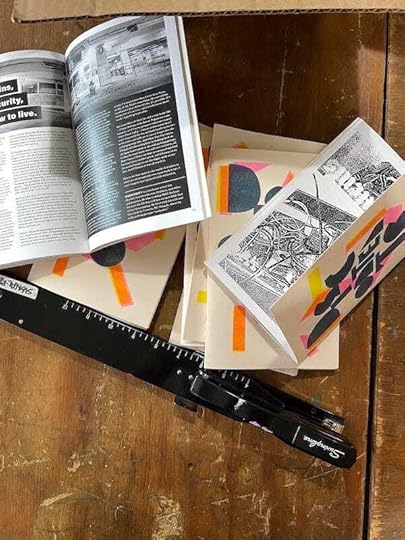 discontents
discontentsMy friends Patrick Barber, Craig Gates, and I put together the pilot issue of a new zine called discontents. The content covers the usual concerns: music, movies, books, and poetry. We reached out to all of our old zine-era friends, so it includes writing by Cynthia Connolly, Peter Relic, Andy Jenkins, Spike Jonze, Fatboi Sharif, Timothy Baker, and Greg Pratt, artwork by Zak Sally and Tae Won You, as well as work by Patrick, Craig, and myself. Subjects include Ceremony, Unwound, Hsi-Chang Lin a.k.a. Still, Charles Yu’s Interior Chinatown, Crestone director Marnie Elizabeth Hertzler, Coherence director James Ward Byrkit, and others.
We did this one as a proof of concept (high-end content, lo-fi production) and will be releasing a full debut issue in the near future.
Follow for Now, Vol. 2My second interview anthology, Follow for Now, Vol. 2, picks up and pushes beyond the first volume with a more diverse set of interviewees and interviews. The intent of the first collection was to bring together voices from across disciplines, to cross-pollinate ideas. At the time, social media wasn’t crisscrossing all of the lines and categories held a bit more sway. Volume 2 aims not only to pick up where Follow for Now left off but also to tighten its approach with deeper subjects and more timely interviews. This one is a bit more focused and goes a bit deeper than the last. It includes several firsts, a few lasts, and is fully illustrated with portraits of every interviewee.
“Relentlessly stimulating and insight-packed, Follow for Now is the kind of book I’d like to see published every decade, and devoured every subsequent decade, from now until the end of humanity.” — Maria Popova, Brain Pickings
There’s an updated version of Follow for Now, Vol. 2 coming soon!
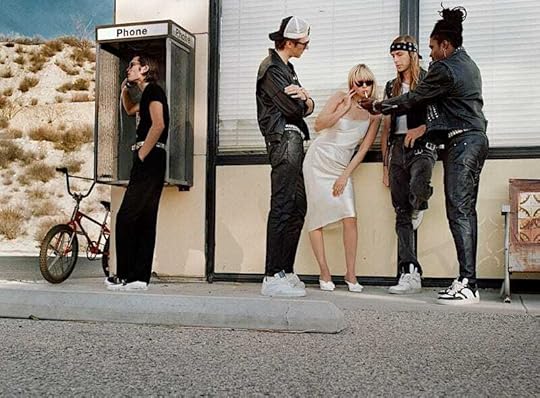 Midnight Diamond by Human Recreational Services.Human Recreational Services
Midnight Diamond by Human Recreational Services.Human Recreational ServicesMy old friend Erik Ellington asked me to write some things for his luxury shoe brand, Human Recreational Services. The collection I worked on is called Midnight Diamond, and I have to include it here as it was one of my favorite opportunities from the last few years. Here’s one bit I wrote:
As if trapped in a photograph by Ed Ruscha hanging on the wall in a David Lynch film, a young couple find themselves stranded along the lost highway in the deep desert. At a gas station, they stumble upon a door that leads to unexpected delights, a sudden contrast to their desolation. Figures emerge from the scene promising not safety but salvation, their boots made of distressed leathers studded with jewels, their movements imbued with the gestures of ceremony. Shoes sparkling in the sand, secret messages from parties hidden in back-masked 1980s metal. The flickering signifiers of ritual, dirty glamour marked by the patina of time. Midnight Diamond blends surrealism and serendipity with mystery and metaphor. Mining diamonds in the desert rough, uncertain times demand the discovery of unseen strengths in unexpected places.
Check out the video that goes with the words.
Escape PhilosophyUsing extreme examples from heavy metal music and science fiction and horror movies, Escape Philosophy: Journeys Beyond the Human Body is a survey of all the ways we try to shuck off the shackles of our physical forms.
“Too often philosophy gets bogged down in the tedious ‘working-through’ of contingency and finitude. Escape Philosophy takes a different approach, engaging with cultural forms of refusal, denial, and negation in all their glorious ambivalence.” — Eugene Thacker, author, In the Dust of This Planet
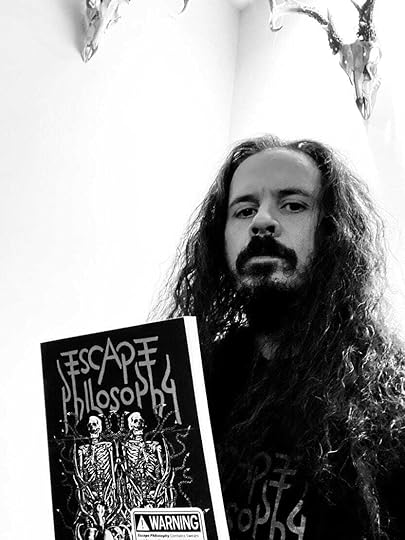 “An interesting read indeed!” — Aaron Weaver, Wolves in the Throne Room
“An interesting read indeed!” — Aaron Weaver, Wolves in the Throne RoomThere’s a new edition of Escape Philosophy forthcoming. More on that soon!
Boogie Down PredictionsWhile I was writing my book Dead Precedents: How Hip-Hop Defines the Future (Repeater Books, 2019), I gathered up some friends, and we put together an edited collection as sort of a companion to Dead Precedents. Time was one of the aspects of both hip-hop and science fiction that I didn’t get to talk about much in that book, so I started asking around. I found many other writers, scholars, theorists, DJs, and emcees, as interested in the intersection of hip-hop and time as I was. As I continued contacting people and collecting essays, I got more and more excited about the book. Boogie Down Predictions: Hip-Hop, Time, and Afrofuturism is a quest to understand the connections between time, representation, and identity within hip-hop culture, as well as what that means for the culture at large.
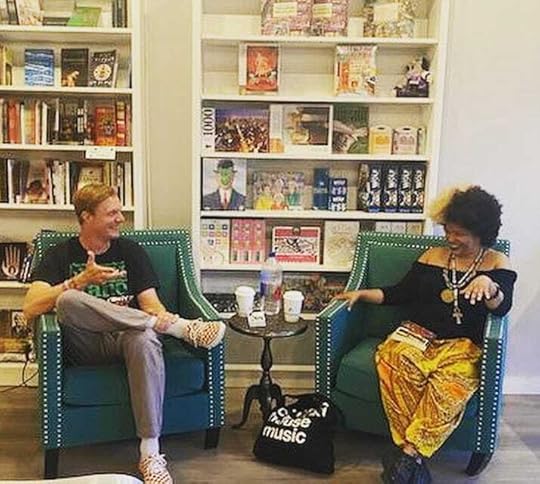 Me and Ytasha Womack talking hip-hop and Afrofuturism. Photo by Shannon Keane.
Me and Ytasha Womack talking hip-hop and Afrofuturism. Photo by Shannon Keane.Ytasha Womack, who wrote the Introduction, and I did an event for Boogie Down Predictions this July at Volumes Books in Chicago, and you missed a treat if you weren’t there.
First Friday Art Crawl“Roy Christopher’s dedication to the future is bracing. Boogie Down Predictions is a symphony of voices, beats, and bars messing with time, unsettling histories, opening portals.” — Jeff Chang, author, Can’t Stop, Won’t Stop
I had a collection of illustrations and logo designs up at Reset Mercantile in Dothan, Alabama. The clip above was shot by Ryan Mills for Big as Life Media. If you’re interested, you can see a few pictures of the pieces on the wall or check out my illustration portfolio. Many thanks to Justin April for the opportunity.
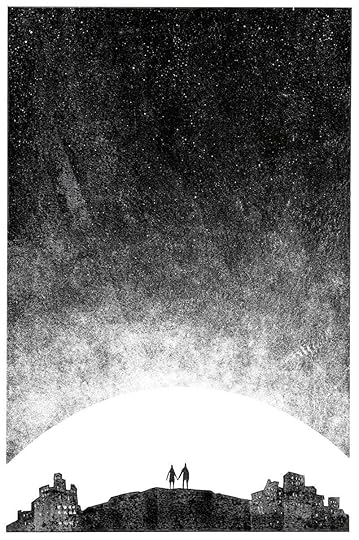 Cover illustration by Jeffrey Alan Love.Different Waves, Different Depths
Cover illustration by Jeffrey Alan Love.Different Waves, Different DepthsMy debut collection of short fiction, Different Waves, Different Depths, takes its name from a comment an old crush made once about her feelings for the author. It also describes these nine stories, varying in style from the literarily weird to the science fiction and in length from the flash to the novella. There’s even a pilot script in here.
Impeller Press will be releasing Different Waves, Different Depths on September 12th, and you can preorder your copy now!
“Working the borderlands between philosophy, sci-fi, and ultra-contemporary social critique, these stories illuminate our strange cusp moment in a deeply humanistic and bracing manner. A sharp, propulsive, and canny collection.” — David Leo Rice, author, Drifter
Dive in deep, ease in the shallows, or just let the tide lap at your toes. Different waves are waiting.
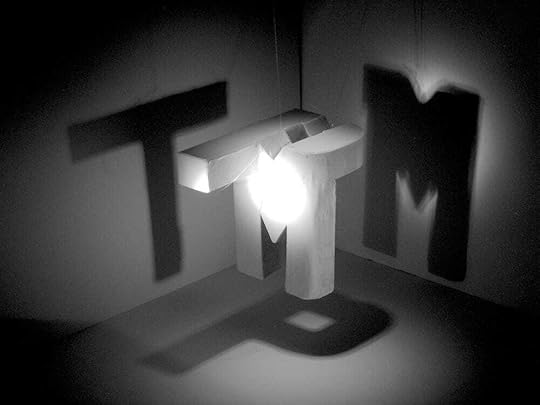 Cover object and image by me.The Medium Picture
Cover object and image by me.The Medium PictureAt long last I have finished my post-punk media theory book. Drawing from the disciplines of media ecology and media archaeology, as well as bringing fresh perspectives from music (e.g., Fugazi, Radiohead, Gang of Four, Run the Jewels, Christian Marclay, Laurie Anderson, et al.) and skateboarding, The Medium Picture illuminates aspects of technological mediation that have been overlooked along the way. With a Foreword by Andrew McLuhan, it shows how immersion in unmoored technologies of connectivity finds us in a world of pure media and redefines who we are, how we are, and what we will be.
“Very much looking forward to reading new Christopher, exactly the sort of contemporary cultural analysis to yield unnerving flashes of the future.” — William Gibson
The Medium Picture is forthcoming.
 Deborah Harry in 1976 vs. Margot Robbie as Harley Quinn in 2016.The Grand Allusion
Deborah Harry in 1976 vs. Margot Robbie as Harley Quinn in 2016.The Grand AllusionI also signed on to write The Grand Allusion for Palgrave Macmillan as a part of their Pivot series. I’m only a few chapters into this one, but it’s shaping up nicely. My dissertation was on the use of allusions in rap lyrics, and I’ve since wanted to expand the analysis to pop cultural references in other media. Our media is so saturated with allusions to other media that we scarcely think about them. Their meaning relies in large part on the catching and interpreting of cultural allusions, on their audiences sharing the same mediated memories, the same mediated experiences.
The Grand Allusion explores these experiences, yielding a new understanding of our media, our culture, and ourselves.
Hope for BoatsSomewhere in there, I decided I wanted to try to write a novel. The seed situation was a funeral and a parade on the same day in a small town, and the story has grown from there. On October 11, 2022, I read the Prologue of “Hope for Boats” to the Rotary Club of Elba, Alabama, on which the fictional town in the story is loosely based. If you’re into it, you can read the excerpt along with me at Malarkey Books.
More on this one as it develops.
I don’t know if I quite earned three years “off,” but I definitely tried. With all of that said, I’m looking forward to getting back into the classroom, corrupting young minds. My creative output might return to a somewhat normal pace though. You’ll be the first to know.
Many thanks to everyone who had anything to do with the above projects — writers, designers, editors, contributors, collaborators, even if you just read one of them — I appreciate it. Without you, all of this would just be scribbles in my notebook. Special thanks to my parents for tolerating me for the last year.
All of these projects are up on my website. Check 'em out!
Thank you for your continued support,
-royc.
July 10, 2023
BOOGIE DOWN PREDICTIONS in Chicago!

Through essays by some of hip-hop’s most interesting thinkers, theorists, journalists, writers, emcees, and DJs, Boogie Down Predictions embarks on a quest to understand the connections between time, representation, and identity within hip-hop culture and what that means for the culture at large. This book explores these temporalities, possible pasts, and further futures from a diverse, multilayered, interdisciplinary perspective.
Ytasha L. Womack, author of Afrofuturism: The World of Black Sci-Fi and Fantasy Culture and the forthcoming Black Panther: A Cultural Exploration, wrote the Introduction. Here’s an excerpt:
This book, edited by Roy Christopher, is a moment. It is the deconstructed sample, the researched lyrical metaphors, the aha moment on the way to hip-hop enlightenment. Hip-hop permeates our world, and yet it is continually misunderstood. Hip-hop’s intersections with Afrofuturism and science fiction provide fascinating touchpoints that enable us to see our todays and tomorrows. This book can be, for the curious, a window into a hip-hop-infused Alter Destiny—a journey whose spaceship you embarked on some time ago. Are you engaging this work from the gaze of the future? Are you the data thief sailing into the past to U-turn to the now? Or are you the unborn child prepping to build the next universe? No, you’re the superhero. Enjoy the journey.
Boogie Down Predictions also features contributions from Omar Akbar, Juice Aleem, Tiffany E. Barber, Kevin Coval, Samantha Dols, Kodwo Eshun, Kembrew McLeod, Chuck Galli, Nettrice Gaskins, Jonathan Hay, Jeff Heinzl, Rasheedah Phillips, Steven Shaviro, Aram Sinnreich, André Sirois, Erik Steinskog, Dave Tompkins, Tia C.M. Tyree, Joël Vacheron, tobias c. van Veen, and K. Ceres Wright.
 [Cover art by Savage Pencil.]
[Cover art by Savage Pencil.]Here’s what people are saying about it:
Roy Christopher’s dedication to the future is bracing. Boogie Down Predictions is a symphony of voices, beats, and bars messing with time, unsettling histories, opening portals. — Jeff Chang, author, Can’t Stop, Won’t Stop
The study of hip-hop requires more than a procession of protagonists, events, and innovations. Boogie Down Predictions stops the clock—each essay within it a frozen moment, an opportunity to look sub-atomically at the forces that drive this culture. — Dan Charnas, author, Dilla Time: The Life and Afterlife of J Dilla
How does hip-hop fold, spindle, or mutilate time? In what ways does it treat technology as, merely, a foil? Are its notions of the future tensed…or are they tenseless? For Boogie Down Predictions, Roy Christopher’s trenchant anthology, he’s assembled a cluster of curious interlocutors. Here, in their hands, the culture has been intently examined, as though studying for microfractures in a fusion reactor. The result may not only be one of the most unique collections on hip-hop yet produced, but, even more, and of maximum value, a novel set of questions. — Harry Allen, Hip-Hop Activist & Media Assassin
Boogie Down Predictions offers new ways of listening to, looking at, and thinking about hip-hop culture. It teaches us that hip-hop bends time, blending past, present, and future in sound and sense. Roy Christopher has given us more than a book; it’s a cypher and everyone involved brought bars. — Adam Bradley, author, Book of Rhymes: The Poetics of Hip-Hop
Join us for what promises to be a fun talk!
Volumes Bookcafé is located at 1373 N. Milwaukee Ave in Wicker Park in Chicago.
I hope to see you there!
More soon,
-royc.
June 26, 2023
Stumbling into Oblivion
I didn’t even know there was an event going on. I mean, when in Austin, The Live Music Capital of the World, one should always assume there’s an event going on. It’s pretty unavoidable. During SXSW bands play in coffeeshops, grocery stores, street corners… I was already going to Austin to visit my partner. We met there while we were both attending the University of Texas, and she moved back after graduate school. So, I go back as often as I can.
This time the trip coincided with a rare appearance by Have a Nice Life, one of my favorite bands, and one I’ve never seen play live. I had tickets to see them at the Strange Day Festival in Olympia, Washington in 2017, but I lived in Chicago at the time and ended up not being able to make it out there. With Planning for Burial and Chat Pile also on the bill, this show was a very welcome surprise.
Next I found out that clipping. was playing the next night at the same venue. Now, I haven’t seen a live show in four years, since July 28, 2019, which is the longest I’ve gone without seeing live music since I saw KISS as an eight-year old. With plans already in place to see Godflesh on July 2nd in Orlando, this was shaping up to be quite the return to live performance.
 Oblivion Access Festival, June 15-18, 2023.
Oblivion Access Festival, June 15-18, 2023.I eventually found out that all of these shows — including headlining spots by Tim Hecker and Godflesh — were part of the Oblivion Access Festival. I didn’t know that going in, but it made the procession of bands in town at the same time make a lot more sense.
That Friday was The Flenser showcase, and Planning for Burial, Thom Wasluck’s one-person band, was my first stop. It hovered around a hundred degrees for the whole ten days I was in town, so it was hot out there. Thom trooped through a blisteringly sweaty set of guitar-flailing post-metal anyway.
After Mamaleek, there was a thunderstorm delay. In heat past a hundred, the light rain was welcomed with arms to the sky. We were all huddled on the top deck, watching the lightning when they corralled everyone inside for an hour.
Once the thunder subsided, we finally emerged to a short, sharp set by Oklahoma City’s own Chat Pile. These guys were the buzz of the festival, and for good reason. Their Flenser debut, God’s Country, has been in my rotation since its release a year ago. Chat Pile is able to take the basic blueprint of rock and make it sound intimidating. They’ve gleefully brought back some of the anger and danger that’s been missing from rock music.

Have a Nice Life has been around for over 20 years. They’ve done a few records and played relatively few shows. As I mentioned above, I’d been keeping an eye on their schedule, and was finally able to end up in the same place at the same time as one of their shows. It was well worth the effort.
To call them a powerhouse seems an understatement. Have a Nice Life pull so many different elements together into a firm focus and point it right at you, it’s a lot to take — especially live. Their records are not ones you listen to casually. They are immersive. Seeing them live is massive, emotive, and cathartic. Ask anyone who’s seen them.
 Me and Mars Kumari up to no good at Oblivion Access [selfie by Mars].
Me and Mars Kumari up to no good at Oblivion Access [selfie by Mars].I spent most of the next day recovering from the onslaught of Flenser bands, but I made it back to the Mohawk to see clipping. I got there in time to meet up with Mars Kumari and to catch Clams Casino’s eclectic live set. Mars has been not so quietly building a hauntological body of work that defies categorization. Check out her record, Mars Kumari Type Beat on Deadverse Recordings, and be on the lookout for her next project, I Thought I Lost You. It’s so dope.
“This is going to be a good one,” Daveed Diggs said at the beginning of clipping’s set, and it was. As story-oriented as they are, each of their records a universe unto itself, their live show was a raucous party. Where some seem to struggle with that translation, the crowd at the Mohawk was all about it, rapping along with all but the most frenetic of Diggs’ verses. He prowled the stage in front of Jonathan Snipes and William Hutson’s table of noise-making gear, rapping nonstop from song to song. It was a party for the apocalypse. They did an impromptu encore without leaving the stage, which included a celebratory cover of J-Kwon’s club anthem “Tipsy.”
 Justin K. Broadrick is Final.
Justin K. Broadrick is Final.Justin K. Broadrick has always been involved in a lot of musical projects, and he performed as three of them in Austin. His most-known industrial-metal band, Godflesh, headlined on Sunday, his heavy-techno project, JKFlesh, did a late-night set on Saturday night/Sunday morning, and his oldest incarnation, Final, played in the giant Central Presbyterian Church in downtown Austin on Sunday afternoon. As this solo ambient-noise act, he rarely performs live. Such a rare setting for such a rare performance. It was a magical, mesmerizing day of drone.
 Sound sermon: Tim Hecker.
Sound sermon: Tim Hecker.After Justin packed up, Tim Hecker took to the pulpit. There’s really no way to convey that experience in words. The church was dark, lit only by the light coming through the stained glass. Hecker was hidden in a haze, obscured by clouds from a smoke-machine, so there wasn’t much to watch. What we heard there though, lined dutifully in the pews, was transcendent. His stuff has always been an odd mix of old and new, organic and synthetic. I read a while ago that he admits to thinking about ideas like ‘liturgical aesthetics after Yeezus‘ and the ‘transcendental voice in the age of auto-tune’. Any description I could hazard will read like a similar string of barely descriptive phrases. I might even say it was religious.
 The crowd at the Central Presbyterian Church for the Final and Tim Hecker show.
The crowd at the Central Presbyterian Church for the Final and Tim Hecker show.The thing about multi-venue festivals like Oblivion Access is that you’re always missing something. You have to make decisions. Though most of mine were made before I arrived, I could still feel the tug of missing out. You have to go with it and be truly present for the shows and the people around you. Many thanks to Thom Wasluck, everyone at The Flenser, Dan Barrett, Justin Broadrick, William Hutson, Suraj Patra, Mars Kumari, and Katie Alfus for getting me into shows, hanging out, and making my accidental festival experience so much fun.
[Photos above by Renee Dominguez, Andrea Escobar, Robert Hein, and Mars Kumari.]
 ESCAPE PHILOSOPHY: Journeys Beyond the Human Body
ESCAPE PHILOSOPHY: Journeys Beyond the Human BodyHey, if you’re into Godflesh, I wrote a book about them. Well, I wrote a book largely inspired by them, black metal, horror movies, and science fiction. Escape Philosophy: Journeys Beyond the Human Body is available as an open-access .pdf and beautiful paperback from punctum books. It’s really quite good, but don’t take my word for it…
“Too often philosophy gets bogged down in the tedious ‘working-through’ of contingency and finitude. Escape Philosophy takes a different approach, engaging with cultural forms of refusal, denial, and negation in all their glorious ambivalence.” —Eugene Thacker, author, In the Dust of This Planet
“Using Godflesh—the arch-wizards of industrial metal—as a framework for a deep philosophical inspection of the permeable human form reveals that all our critical theory should begin on the street where wasted teen musicians pummel their mind and instruments into culture-shifting fault lines. Godflesh are not just a ‘mirror’ of all the horrors and glories we can inflict on our bodies, but a blasted soundscape of our moans. Roy Christopher’s book is a thought-provoking and delightful crucible of film, music, and the best kind of speculative thought.” — Peter Bebergal, author, Season of the Witch
 “An interesting read indeed!” — Aaron Weaver, Wolves in the Throne Room
“An interesting read indeed!” — Aaron Weaver, Wolves in the Throne RoomAs always, thanks for reading!
Stay cool out there,
-royc.



